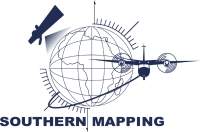Africa produces more than 60 metal and mineral products and is a major producer of several of the world’s most important minerals and metals including gold, diamonds, uranium, manganese, chromium, nickel, bauxite and cobalt. Although underexplored, Africa hosts about 30% of the planet’s mineral reserves, including 40% of gold, 60% of cobalt and 90% of the world’s platinum group metals (PGM) reserves — making it a truly strategic producer of these precious metals.
Southern Mapping Company (SMC) has partnered with several mines throughout the continent by providing accurate light detection and ranging (Lidar) maps and surveys needed for mineral exploration and mine management.
Says Peter Moir, chief executive of SMC: “The increase in exploration and mine development in Africa has been primarily focussed on gold and diamond exploration. Undoubtedly, there is still great scope for these commodities, but riding on the back of improving base metal prices, this sector could see an increase in activities. Mozambique, Nigeria and Madagascar are but a few countries that have tremendous potential for base metal and industrial mineral deposits.”
The use of advanced technology is assisting the company in accurately and rapidly surveying existing and potential mining sites on the African continent. SMC recently completed projects in Burundi, Namibia, Botswana and Tanzania. The company uses advanced laser technology known as Lidar. The Lidar combined with a digital camera produces digital terrain models and digital orthophotos of selected survey sites. The data sets created are used for the design of mine infrastructure, pits and dams. The information gathered is also combined with geological surveys for resource estimation. This facilitates with the management and economic viability evaluation of a mine.
“We utilise state-of-the-art equipment to conduct highly accurate and rapid airborne surveys. We have now taken technology one step further and in tandem with the combination of Lidar and the digital camera we have included hyperspectral (integration of optical remote sensing and traditional spectroscopic technologies) equipment which allows us to clearly differentiate unique spectral signatures on the surface of the earth. Hyperspectral systems now make it possible to collect and analyse hundreds of spectral bands across the electromagnetic range, providing detailed spectral data previously not possible through multi-spectral systems,” says Moir.
In laymen’s terms, this means that hyperspectral systems now make it possible to collect and analyse hundreds of spectral bands across the electromagnetic spectrum. This multi-dimensional data makes a wide diversity of mining applications possible. Mine management can now detect mineral deposits, identify and monitor mining operations as well as provide an accurate assessment of the extent of how tailings (dumps) have changed over time, which is necessary in calculating the lifecycle of a mine.
“Our data sets and orthophotos gathered from the Lidar survey offer an image resolution of 10cm to 15cm above ground level which means that our maps are incredibly accurate. Combined with the hyperspectral images, the client is provided with a comprehensive mapping solution for the exploration, planning, management and rehabilitation of a mine,” concludes Moir.

